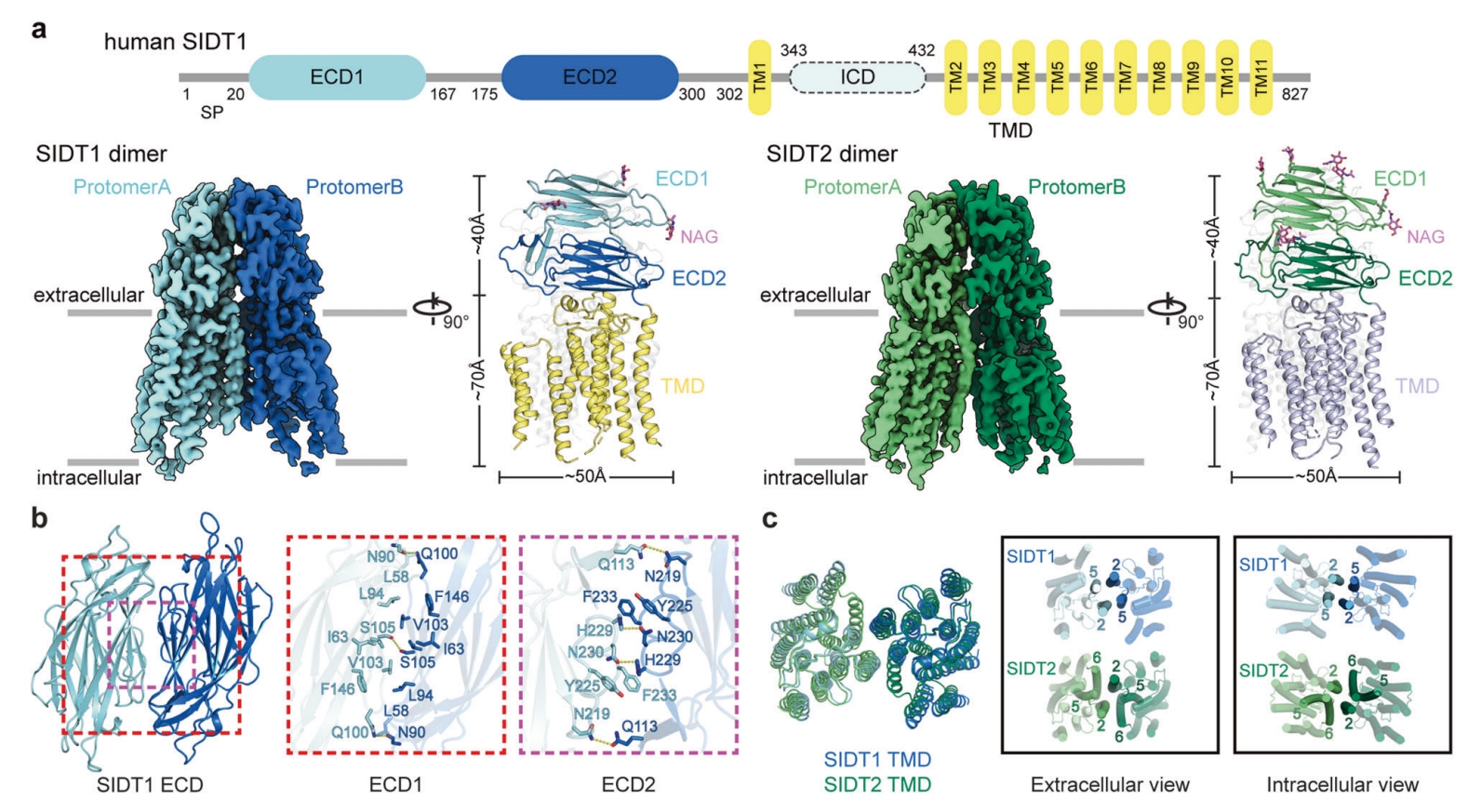Cryo-EM structures of human SID-1 transmembrane family proteins and implications for their low-pH-dependent RNA transport activity
In the nematode Caenorhabditis elegans, the systemic RNA interference defective protein 1 (SID-1) plays a crucial role in systemic RNA interference (RNAi) by facilitating the transport of exogenous double-stranded RNA (dsRNA) into the cytoplasm.1 Human SIDT1 and SIDT2 are closely related members of the SID-1 transmembrane family, and have been implicated in various biological processes such as glucose and lipid metabolism, innate immunity, and tumorigenesis.2,3,4,5,6 SIDT1 predominantly localizes to the plasma membrane and enhances the cellular uptake of synthetic small interfering RNA (siRNA)7 and plant-derived microRNA (miRNA).8 Using a Sidt1-knockout mouse model, our previous studies revealed that SIDT1 expressed by gastric pit cells facilitates the uptake of dietary miRNAs.8 Mechanistic analyses found that uptake of miRNAs by SIDT1 is lowpH-dependent.8 SIDT2 mainly localizes to the lysosomal membrane. It can facilitate the uptake of naked single-stranded (ss) oligonucleotides into cells,9 and mediate RNA/DNA uptake by lysosomes during RNautophagy/DNautophagy.10,11 However, molecular mechanisms underlying SIDT1- and SIDT2-dependent RNA uptake, especially for exogenous small RNAs, remain elusive. Here, we present the cryo-electron microscopy (cryo-EM) structures of human SIDT1 and SIDT2. Both structures reveal an overall architecture of a dimeric arrangement composed of an extracellular domain (ECD) rich in β-strands and a transmembrane domain (TMD) with 11 passes, highlighting the remarkable structural congruence. In situ assays confirmed that both proteins exist as dimers or higher-order oligomers. Importantly, the ECDs of SIDT1 and SIDT2 bind synthetic plant-derived miRNA only under acidic conditions. RNA binding under low pH can trigger higher-order assembly of the ECD dimer, suggesting the potential importance of oligomerization during RNA uptake. These findings provide insights into the lowpH-dependent activation of RNA-binding by SIDT1 and SIDT2, fostering a better understanding of nucleic acid delivery mechanisms.

附件下载: